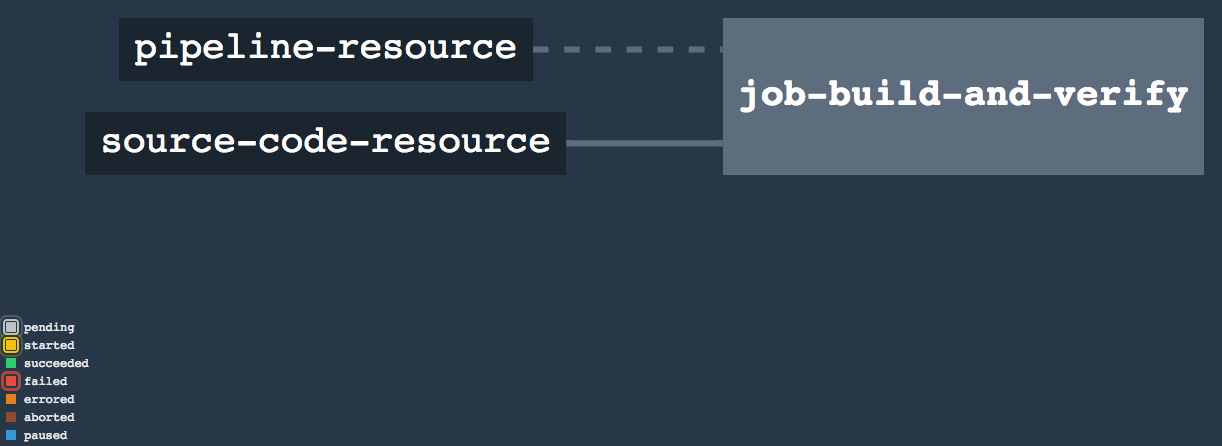The goal of this project is to build a Reference Concourse Pipeline for Java applications.
https://github.com/starkandwayne/concourse-tutorial.
We have built a step by step tutorial on how to build a standard Continuous Integration pipeline to build java applications. We will dedicate a branch to perform each step. This branch, the master, is dedicated to the chapter 00 where we set up Concourse and a git repository for the application we will build using the pipeline.
The current project contains concourse artifacts, i.e. pipeline, tasks and script files. It does not build any specific project.
If you want to follow this tutorial you will need the following directory layout:
concourse-tutorial
|
└-- maven-concourse-pipeline (clone from https://github.com/MarcialRosales/maven-concourse-pipeline/)
└-- maven-concourse-pipeline-app1 (clone from your own repository)
- First create a folder
mkdir concourse-tutorial
cd concourse-tutorial
- Checkout master branch of this repository
concourse-tutorial$ git clone https://github.com/MarcialRosales/maven-concourse-pipeline
- Create a repository or fork https://github.com/MarcialRosales/maven-concourse-pipeline-app1 repo
- Checkout your repository
concourse-tutorial$ git clone https://github.com/<myaccount>/maven-concourse-pipeline-app1
Launch Concourse with Docker-compose
Access the folder maven-concourse-pipeline. From this folder, we are going to launch Concourse using Docker compose. This folder has a docker-compose.yml file and a keys folder with all the required ssh keys.
Make sure you have Docker and Docker compose installed.
To launch concourse we run docker-compose up which by default reads the file docker-compose.yml. On this file we have declared the 3 containers we need to run Concourse: the database, the web-server which gives us the nice Concourse front-end and the worker container where concourse executes the tasks.
Note: Running via docker-machine : If you are running concourse via docker-machine (not natively) make sure you set up the environment variable CONCOURSE_EXTERNAL_URL before running docker-compose up.
CONCOURSE_EXTERNAL_URL=`echo $DOCKER_HOST | sed s/tcp/http/ | sed s/2376/8080/` nohup docker-compose up
We can open the CONCOURSE_EXTERNAL_URL in our browser. The default credentials are concourse:changeme
Download fly Once we have Concourse running, we need to download a command line utility called fly from the main page of our Concourse.
Login to Concourse Before we operate with Concourse through fly we need to login and remember that login attempt with an alias. Every command we subsequently invoke must refer to that alias.
Let's login to Concourse running under http://192.168.99.100:8080 using username and password concourse:changeme and we give it the alias plan1:
fly -t plan1 login -c http://192.168.99.100:8080 -u concourse -p changeme
It is very likely that fly warns us with a message similar to this one:
fly version (2.2.1) is out of sync with the target (2.6.0). to sync up, run the following:
fly -t plan1 sync
cowardly refusing to run due to significant version discrepancy
All we have to do is run the suggested command: fly -t plan1 sync and it will automatically upgrade our fly client.
Now, we are all set to continue.
01 - Compile & Verify
concourse-tutorial/maven-course-pipeline$ git checkout origin/01_build_and_verify
concourse-tutorial/maven-course-pipeline$ git checkout origin/02_use_corporate_maven_repo
concourse-tutorial/maven-course-pipeline$ git checkout origin/03_release_versioned_artifact
concourse-tutorial/maven-course-pipeline$ git checkout origin/04_install_built_artifact
concourse-tutorial/maven-course-pipeline$ git checkout origin/05_deploy_and_verify
concourse-tutorial/maven-course-pipeline$ git checkout origin/06_deploy_surefire_reports
Before we can push our application, we need to provision the necessary infrastructure. We need a PCF foundation identified by an URL, we also need an organization, a space and a user. That space/organization must be configured with certain physical prerequisites like amount of RAM, disk, etc.
This type of provisioning occurs before any application attempts to deploy itself. Furthermore, it is very likely that several applications will be deployed on the same runtime environment. To be more specifics, in terms of PCF, a runtime environment is a space within an organization within a PCF foundation. And we can go even further and assume that we could have many runtime environments for different line of business; we could have all the front-office applications running in one runtime environment and all the back-office apps in separate runtime environment. Some people use the term ecosystem to refer to a runtime environment. Sounds like a good name to me too. To summarize, applications are deployed to ecosystems which must be previously provisioned by someone...


